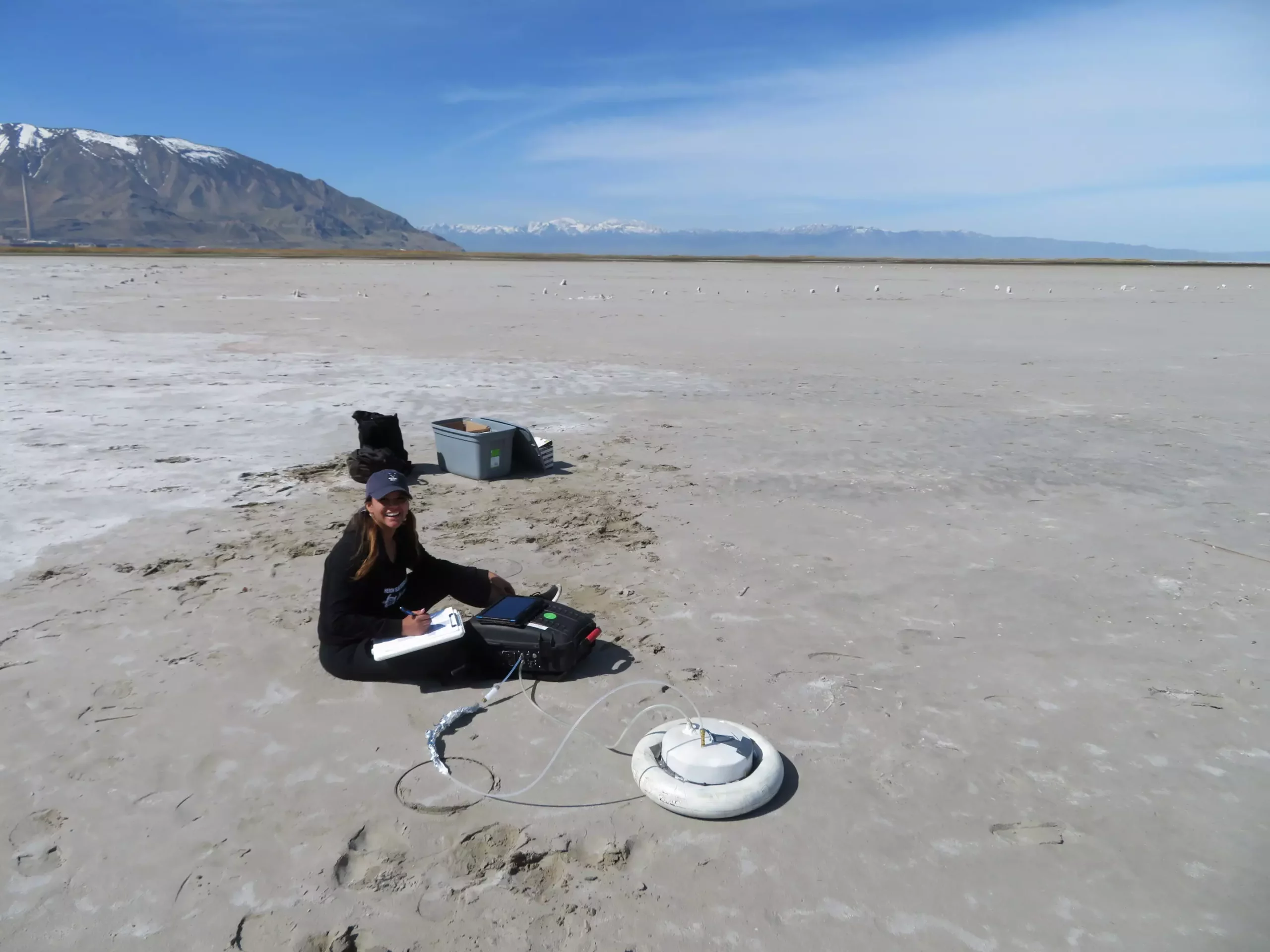Recent research conducted by the Royal Ontario Museum (ROM) has drawn significant attention to the environmental consequences of desiccated lake beds, particularly the Great Salt Lake in Utah. The study revealed a staggering emission of 4.1 million tons of carbon dioxide and other greenhouse gases in 2020 alone, a figure that highlights the potential environmental peril arising from neglected ecosystems. As climate change continues to exacerbate global warming, the revelation that drying lakes are substantial contributors to greenhouse gas emissions is alarming and merits urgent attention.
The research posits that human-induced actions, such as agricultural and industrial water consumption, are primarily responsible for the drastic depletion of the Great Salt Lake. Despite natural fluctuations in lake levels due to meltwater inflows, it is our unsustainable activities that have driven these once-vibrant ecosystems toward desiccation. The findings push for a critical reassessment of how we approach water management and climate change mitigation, emphasizing the need to incorporate the impacts of drying lakes into broader environmental models.
Methane and Carbon Dioxide: A Dangerous Duo
The study examined greenhouse gas emissions specifically from the exposed sediments of the Great Salt Lake, where carbon dioxide accounted for 94% of the total emissions. This is particularly concerning given methane’s potency as a greenhouse gas, being 28 times more effective at trapping heat in the atmosphere than carbon dioxide. This compound, while emitted in smaller quantities, represents a significant threat to global warming. The researchers creatively employed “carbon dioxide equivalents” to evaluate the combined impact of both gases, emphasizing the necessity for a nuanced understanding of greenhouse gas dynamics.
Soren Brothers, head of the research team and curator of climate change at ROM, emphasizes the pivotal role that desiccated lake beds, like that of the Great Salt Lake, play in accelerating climate change. He argues that not only is this an overlooked source of emissions, but it is also a critical element in broader climate change discussions. As renowned ecosystems such as the Aral Sea and Lake Urmia dry up, the consequences extend beyond mere biodiversity loss; they have the potential to aggravate global warming and air quality issues, threatening human health and environmental sustainability.
The Methodology: Measuring Emissions and Assessing Impact
The scientific methodology deployed in the study offers valuable insight into how researchers measure emissions from such unique landscapes. By using portable greenhouse gas analyzers and systematic sampling across multiple sites of the dried lake bed, the team gathered data that enables them to link temperature variations to greenhouse gas emissions effectively. The innovative nature of this research becomes evident as Brothers and his team combined fieldwork and server data to explore the inexplicable relationship between human activity and the accelerated release of greenhouse gases.
The fieldwork conducted from April to November 2020 was revealing, indicating that climate conditions like temperature played a crucial role in emissions, particularly from the long-exposed lake bed areas. The researchers uncovered a noteworthy correlation between increasing temperatures and emissions, suggesting that the impact of climate change is a self-reinforcing feedback loop. The findings highlight how rapidly changing environments can contribute to atmospheric warming, intensifying the urgency for active climate intervention.
Poverty and Environmental Justice: The Human Element in Environmental Decline
Addressing the desiccation of lakes like the Great Salt Lake does not merely revolve around environmental science; it extends into themes of poverty, environmental justice, and community health. The emissions released from drying lakes degrade air quality, disproportionately affecting marginalized communities already suffering from pollution and health disparities. Consequently, the implications of these emissions are not just an ecological concern; they are tied intricately to the socio-economic fabric of affected regions.
Calls for policy reform and action are indispensable as the evidence mounts regarding the environmental impact of human practices on vulnerable ecosystems. An integrated approach to water management that prioritizes both ecological health and community well-being is imperative. Emphasizing communal and inclusive strategies can empower local populations while mitigating the impact of human activities on critical natural habitats.
A Path Forward: Integrating Insights into Climate Action
The ROM study emphasizes that as the climate crisis escalates, so too must our strategies to address it. The process of incorporating emissions from desiccated lake beds into climate action plans is vital for creating a holistic understanding of greenhouse gas contributions. By refining existing climate action frameworks to consider these newfound emissions, policymakers can work toward developing comprehensive strategies that acknowledge the interconnectedness of human activity and environmental health.
Ultimately, transforming data into actionable climate policies necessitates collaboration across disciplines—environmental science, public policy, and community activism. The vulnerabilities of ecosystems like the Great Salt Lake should serve as a clarion call for immediate action to mitigate the climate crisis and enact sustainable practices that honor the delicate balance of our natural world.


Leave a Reply